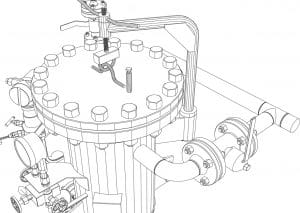 With the help of increasingly more advanced technologies, companies today are able to accomplish much more than they ever thought possible. However, along with this innovation has come a need for more advanced solutions to maintain their operations, such as efficient and reliable electrical cooling solutions. Traditionally, companies often relied on conventional air conditioners or air compressors to generate enough cold air to keep electrical enclosures from overheating. In more advanced applications, companies more often rely on efficient heat exchangers, which not only help lower the costs and boost the efficiency of electrical cooling, but also create more eco-friendly thermal management processes.
With the help of increasingly more advanced technologies, companies today are able to accomplish much more than they ever thought possible. However, along with this innovation has come a need for more advanced solutions to maintain their operations, such as efficient and reliable electrical cooling solutions. Traditionally, companies often relied on conventional air conditioners or air compressors to generate enough cold air to keep electrical enclosures from overheating. In more advanced applications, companies more often rely on efficient heat exchangers, which not only help lower the costs and boost the efficiency of electrical cooling, but also create more eco-friendly thermal management processes.
Changing the nature of electrical cooling
With more traditional electrical cooling solutions, the ability to make thermal management more eco-friendly wasn’t always possible. Out of necessity, air conditioners and air compressors require large amounts of energy to operate. When companies rely on them as their primary electrical thermal management solutions, they have to accommodate the systems’ high energy needs, and their utilization of chemicals and substances that could prove harmful to the environment. Heat exchangers are able to make electrical cooling more efficient due to their more natural heat transfer processes, which don’t require the use of cold air to combat electrical waste heat.
Utilizing methods that minimize energy usage
Changing the nature of electrical cooling methods also makes heat exchangers a more eco-friendly solution for companies. They don’t require as much energy, and the cooling fluids they utilize, such as water, are friendly to the environment. The reduced need for energy is significant, and the benefits of more energy efficient cooling are multiplied the more companies upgrade their older cooling systems with more eco-friendly heat exchangers. The secret to their efficient use of energy lies in the way in which heat exchangers are designed to prevent electrical overheating. Within the heat exchanger, the eco-friendly cooling fluid is able to rapidly absorb waste heat as it’s emitted, then transfer the heat once the fluid reaches its latent heat of vaporization.
Designing solutions for optimal eco-friendliness
When companies first began transforming their electrical cooling systems to more innovative heat exchangers, the common motivations often involved lowering the costs of operations and improving their thermal management’s efficiency. Today, companies in every industry have to balance efficiency and productivity with a higher level of environmental friendliness, both to appease consumer demands and to meet more environmentally conscious industry standards. Heat exchangers are often an integral part in a company’s plans to lower its environmental footprint, and are also a common component in other green business initiatives.
For more information about creating more eco-friendly cooling solutions, call Noren Thermal Solutions in Taylor, TX, at 866-936-6736.







